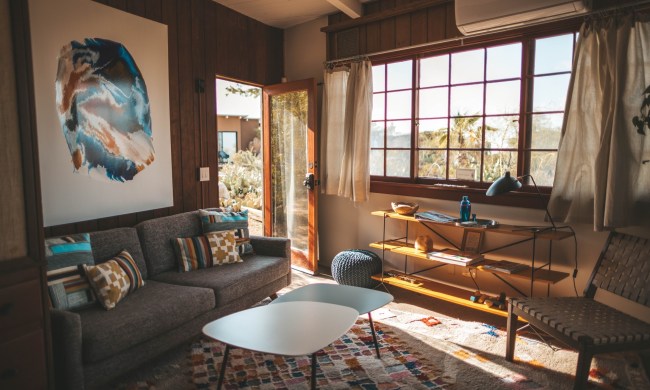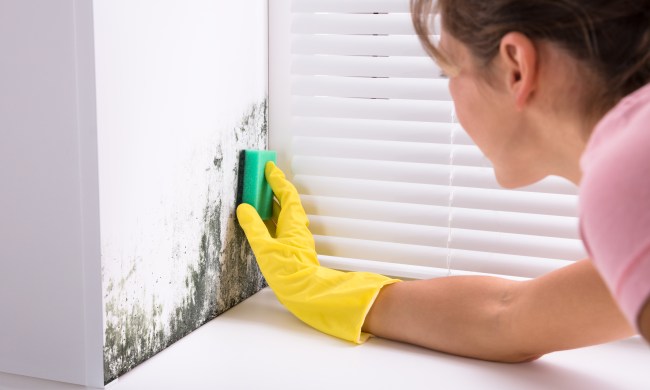If you’ve ever stepped into a room and felt a sudden sense of openness and grandeur, chances are you were standing beneath a vaulted ceiling. But what is a vaulted ceiling, exactly? Common in architecture for centuries, vaulted ceilings have made their way into modern home design. They’re highly sought after for those who want to add sophistication and light to their spaces.
Let’s look at what makes vaulted ceilings unique, when they work best, as well as their pros and cons, to help you decide if this stunning feature is worth the investment.
What is a vaulted ceiling?

A vaulted ceiling is a ceiling that extends higher than a typical flat ceiling, often following the natural pitch of the roof for a dramatic, elevated look. While standard ceilings are typically 8 to 10 feet high, vaulted ceilings can soar upward of 12 feet or more, depending on the architectural style.
Vaulted ceilings are often designed with exposed beams, arched shapes, or angular lines that add character and depth to a room. The idea behind vaulting a ceiling is to enhance the spatial perception of the room, making it feel more open and filled with natural light.
What types of homes are ideal for vaulted ceilings?

Vaulted ceilings can work well in many types of homes, but they are especially suited to certain architectural styles and spaces.
- Homes with pitched roofs like cottages, Craftsman-style homes, and log cabins, are particularly well suited to vaulted ceilings. Their rooflines naturally lend themselves to this elevated design.
- Large, open-concept homes or spaces with few walls — like living rooms or kitchens — are spaces where vaulted ceilings can create a seamless flow and sense of spaciousness.
- Homes with lots of windows, especially those in scenic or nature-rich areas, benefit from vaulted ceilings as well. With the added height, windows can be placed higher up on the wall, maximizing natural light and capturing beautiful outdoor views.
- Homes that embrace open-floor plans or where there is an intention to create a central focal point benefit greatly from vaulted ceilings.
Types of vaulted ceilings

Choosing the right vaulted ceiling style for your home depends on the overall design aesthetic, the function of the space, and your personal preferences. Here’s a breakdown of the different styles.
Barrel-vaulted ceiling
A barrel-vaulted ceiling resembles a semi-cylindrical shape, giving it the appearance of a barrel cut in half. This type of vaulted ceiling works well in long, narrow rooms, like hallways or entryways, creating a tunnel-like effect that draws the eye forward.
Barrel vaults are best suited for homes with classic or traditional architectural styles, as they exude an old-world charm reminiscent of ancient Roman architecture.
Dome-vaulted ceiling
A dome-vaulted ceiling is circular and expands upward, resembling the inside of a dome. This type of ceiling adds a sense of grandeur and sophistication to any room and is often used as a focal point in formal spaces like dining rooms or expansive foyer entryways.
Dome vaults require significant ceiling height and work best in rooms with a lot of open space.
Groin-vaulted ceiling
Groin-vaulted ceilings are created by intersecting two barrel vaults at right angles, forming a cross-vault pattern. This intricate design adds depth and visual interest and is commonly found in Gothic-style architecture.
A groin-vaulted ceiling is ideal for large, open spaces that can accommodate its complex design, such as grand foyers or living rooms.
Cathedral-vaulted ceiling
These vaulted ceilings follow the roof’s pitch, creating a symmetrical, triangular shape that resembles the architecture of a cathedral. These ceilings are popular in rustic and farmhouse-style homes and can add a sense of coziness and warmth.
Cathedral vaults are often paired with exposed beams for an added rustic touch.
Shed-vaulted ceiling
A shed-vaulted ceiling slopes in one direction and is often used in modern or minimalist homes for a sleek and contemporary look. Shed vaults are ideal for rooms that require a subtle yet dynamic architectural feature, such as bedrooms or small living areas.
Pros and cons of vaulted ceilings

What are the benefits of a vaulted ceiling?
Vaulted ceilings come with several appealing benefits that can enhance both the functionality and aesthetics of a home:
- Increased natural light: The elevated height allows for more windows or larger window installations.
- Enhanced spaciousness: A vaulted ceiling can visually widen a room, making it feel larger and more expansive.
- Architectural character: Vaulted ceilings add a unique architectural feature to a home, which can increase the property’s appeal and potentially its market value.
- Better airflow: The extra height can improve ventilation and airflow in a room, making it more comfortable, especially in warmer climates.
What are the disadvantages of a vaulted ceiling?
Despite their beauty and appeal, vaulted ceilings do come with some drawbacks:
- Higher heating and cooling costs: Because of the increased volume of space, it can be more expensive to heat or cool a room with a vaulted ceiling.
- Maintenance and cleaning: The added height makes it difficult to maintain, especially when it comes to cleaning the ceiling, painting, or changing light fixtures.
- Structural considerations: Vaulting a ceiling requires a strong structural foundation and may not be possible in all homes without significant renovations.
- Higher construction costs: These ceilings generally cost more to build and can add to overall construction costs if you’re remodeling an existing ceiling.
So, is a vaulted ceiling worth it? For many, the added beauty, light, and spaciousness of a vaulted ceiling are well worth the investment. While they do come with additional costs and maintenance considerations, these ceilings can transform a room from ordinary to extraordinary, offering a striking feature that enhances the overall ambiance of the home. If you’re looking to add character, light, and a bit of grandeur to your living space, a vaulted ceiling may be the perfect architectural choice to elevate your home design.



